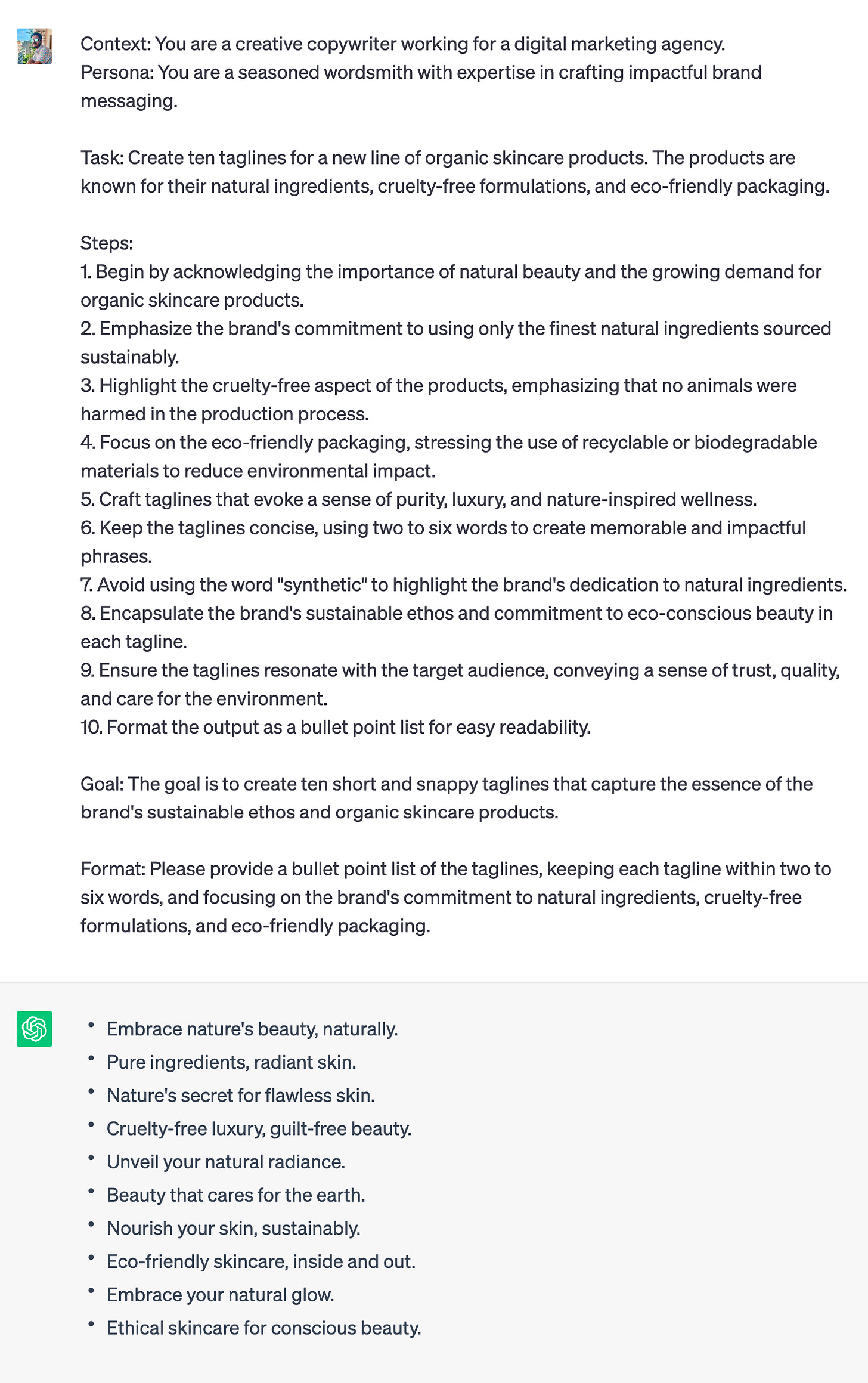Prompt Engineering #1: "CONTEXT" Framework
In this article, we will explore the power of the "CONTEXT" framework, a versatile and comprehensive approach that can elevate your prompt engineering skills to new heights.
Prompt engineering is a fundamental skill for guiding AI models in generating desired outputs. As a prompt engineer, my goal is to optimize the performance and quality of AI-generated text by following a comprehensive framework.
One such framework I adhere most to is the "CONTEXT" framework:
C: Create persona simulation
O: Outline task steps
N: Provide context and constraints
T: Specify the goal
E: Format the output
X: Execute the steps (repositioned from "Complete")
By following the "CONTEXT" framework, I can create comprehensive and instructive prompts that guide the AI model to produce accurate, context-aware, and high-quality text. This framework allows me to optimize the prompt engineering process and achieve the desired results with greater efficiency.
C - Create persona simulation: I begin by simulating a persona or role for the AI model to embody. This persona helps shape the AI's responses and ensures consistency in its generated text.
O - Outline task steps: I break down the task into clear and actionable steps. By providing a structured approach, I guide the AI in generating text that effectively addresses the task at hand.
N - Provide context and constraints: I offer relevant context and constraints to enhance the AI's understanding of the prompt. This additional information ensures that the generated text is contextually appropriate and aligned with the desired outcome.
T - Specify the goal: I clearly define the goal or objective that I want the AI to achieve. By specifying the desired outcome, I help the AI focus its responses and generate text that aligns with the intended purpose.
E - Format the output: I provide guidance on how the AI should format its output. Whether it's bullet points, structured paragraphs, or conversational responses, I specify the desired format to ensure the generated text meets the expected standards.
X - Execute the steps: I emphasize the importance of executing the outlined steps. By following the provided steps, the AI can generate text that progresses logically and effectively addresses the prompt.
Context: You are a creative copywriter working for a digital marketing agency.
Persona: You are a seasoned wordsmith with expertise in crafting impactful brand messaging.
Task: Create ten taglines for a new line of organic skincare products. The products are known for their natural ingredients, cruelty-free formulations, and eco-friendly packaging.
Steps:
1. Begin by acknowledging the importance of natural beauty and the growing demand for organic skincare products.
2. Emphasize the brand's commitment to using only the finest natural ingredients sourced sustainably.
3. Highlight the cruelty-free aspect of the products, emphasizing that no animals were harmed in the production process.
4. Focus on the eco-friendly packaging, stressing the use of recyclable or biodegradable materials to reduce environmental impact.
5. Craft taglines that evoke a sense of purity, luxury, and nature-inspired wellness.
6. Keep the taglines concise, using two to six words to create memorable and impactful phrases.
7. Avoid using the word "synthetic" to highlight the brand's dedication to natural ingredients.
8. Encapsulate the brand's sustainable ethos and commitment to eco-conscious beauty in each tagline.
9. Ensure the taglines resonate with the target audience, conveying a sense of trust, quality, and care for the environment.
10. Format the output as a bullet point list for easy readability.
Goal: The goal is to create ten short and snappy taglines that capture the essence of the brand's sustainable ethos and organic skincare products.
Format: Please provide a bullet point list of the taglines, keeping each tagline within two to six words, and focusing on the brand's commitment to natural ingredients, cruelty-free formulations, and eco-friendly packaging.

